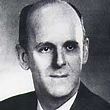Hobart Mowrer
Born in 1907, Hobart grew up in Unionville, Missouri, and suffered from major depression due to the death of his father when Hobart was Thirteen (Lindzey).
But he endured and graduated from high school, entering the University of Missouri in 1925. He majored in Psychology and studied under a behaviorist from Germany by the name of Meyer. His senior year, Hobart was expelled for distributing a phony questionnaire that asked students about their sexual habits. He was later awarded a degree and entered Johns Hopkins, studying under Dunlap. He completed his Doctorate in Spatial Orientation in 1932 and went on to get married to Willie Mae (Lindzey).
It was difficult to find employment during the Great Depression, but Hobart finally acquired a fellowship at Yale researching Learning. After two years, he was hired by the Human Relations department to teach the integration of Psychology and Society. Some years later, he began to experiment with Shock Therapy to prove that anxiety is anticipatory. In 1940, Hobart took on the position of Assistant Professor at Harvard. While there, he developed the Harvard Department of Social Relations. He also struggled with his depression again, causing him to wonder if the Freudian analysis he had experienced were faulty. When the war started, Hobart became a Psychologist for what would become the CIA. His experience allowed him to judge how well soldiers reacted to stress. In 1948, they moved to the University of Illinois to again research Learning. In 1953, he suffered his worst bout of depression and was forced to be hospitalized, forgoing the presidency of the American Psychological Association (Lindzey).
After several years, he was forced to resort to a clinical drug to beat the depression. It was at this time that Hobart read Magnificent Obsession by Douglas and it changed his official approach to Psychology. After some convincing, Hobart attained funds from a branch of Eli Lilly to start a program to teach his techniques on counseling in groups. It was here that group therapy was born and Hobart encouraged neurotic individuals to find their cure in the confessing of deception (Lindzey).
Hobart finally “hung up” his pen and pad in 1975. His wife died in 1979 due to health problems. This led him to commit suicide in 1982. He was 75 (Lindzey).



GinaFoust DeYoung
Very Interesting.
19 May at 15:39
LikeLike